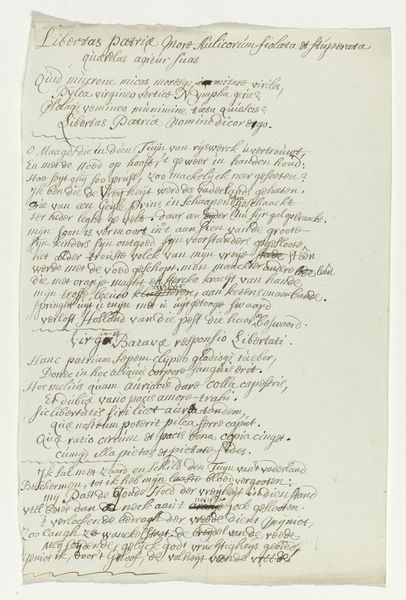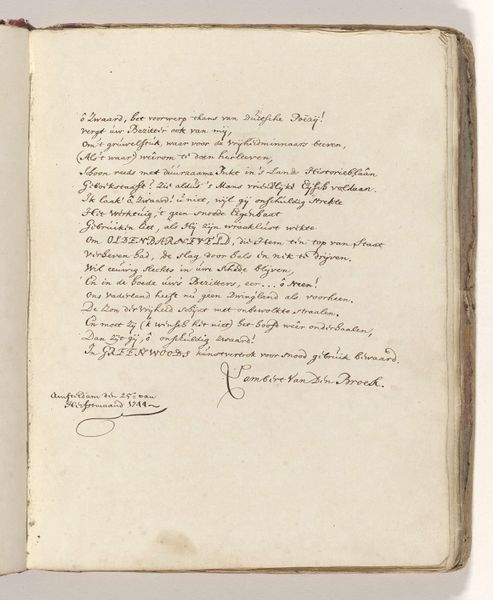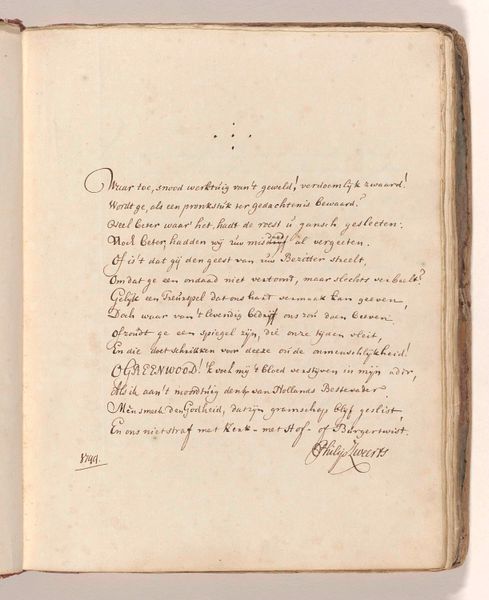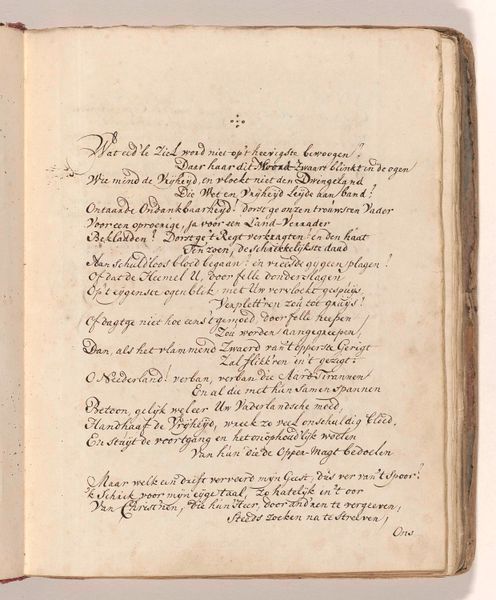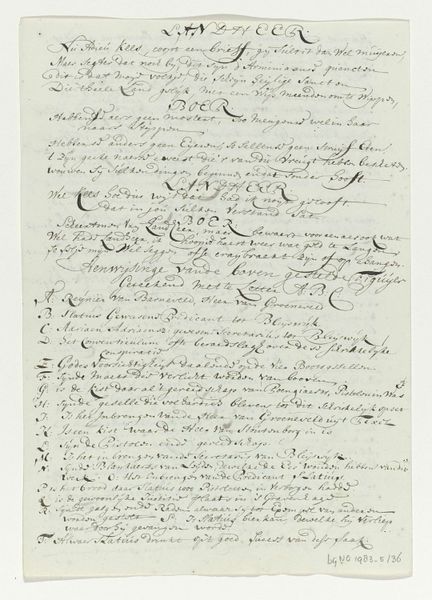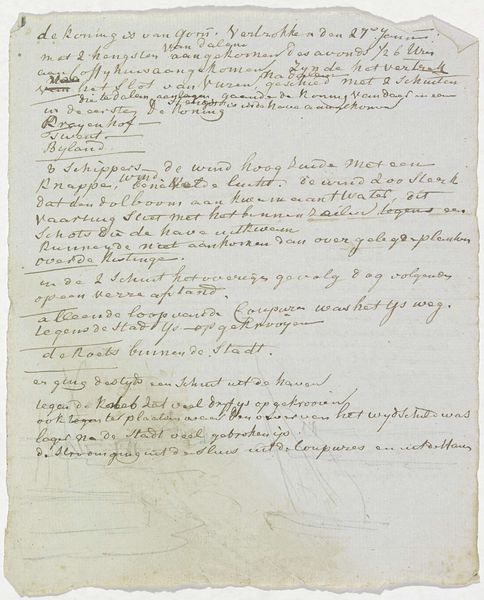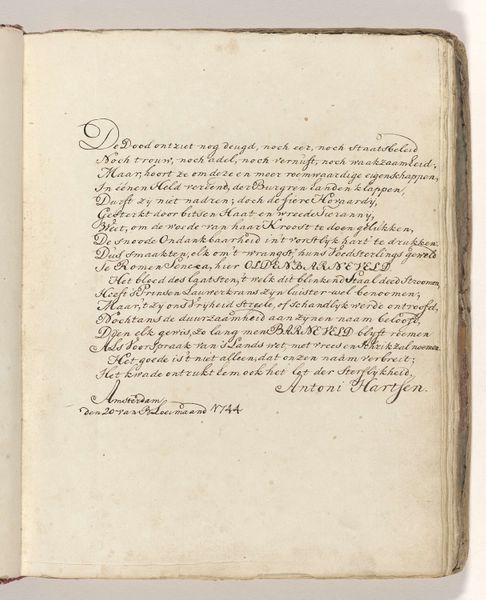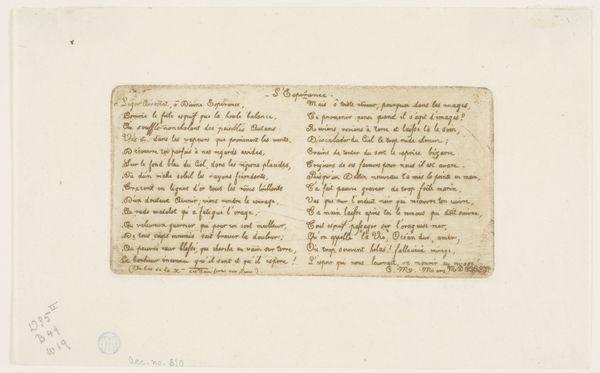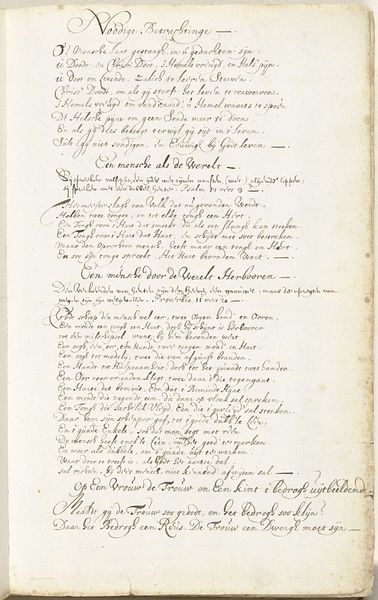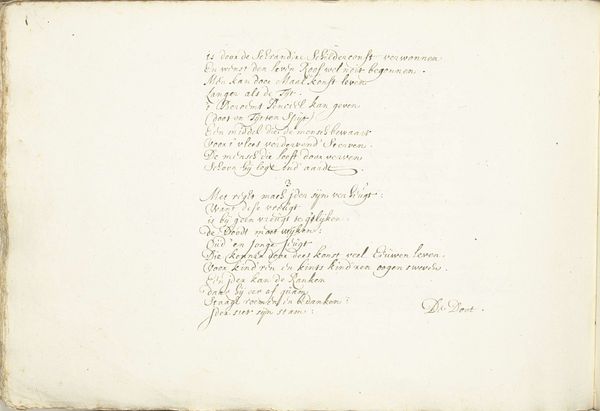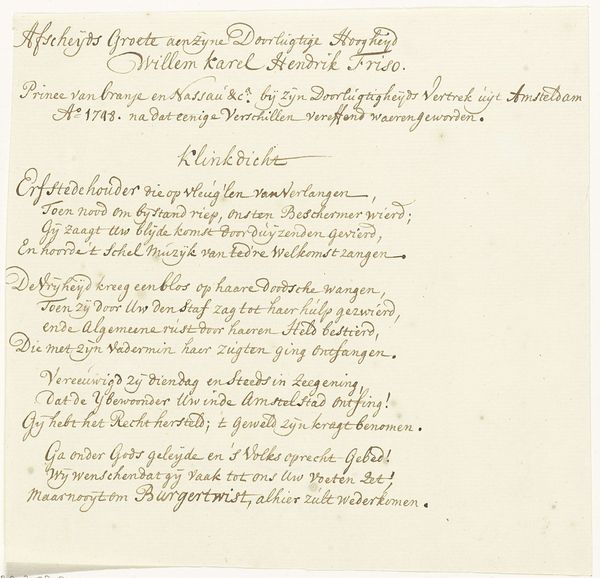
drawing, paper, ink
#
drawing
#
narrative-art
#
baroque
#
paper
#
ink
Dimensions: height 315 mm, width 205 mm
Copyright: Rijks Museum: Open Domain
Editor: This document from around 1710, titled “Explanation of the Arminian Serpent,” appears to be an ink drawing on paper, currently held at the Rijksmuseum. It's almost entirely text. What catches my eye is the beautifully stylized handwriting—but honestly, the script makes it hard to decipher! What do you see in this piece? Curator: For me, this work immediately calls to mind the complex tapestry of religious and political conflict in the early 18th century. The serpent is, of course, a loaded symbol – historically representing deceit, chaos, and the fall from grace. Its association with Arminianism, a theological movement, positions it as a visual representation of the perceived threats to orthodox religious and political structures. Editor: So the serpent is meant to be… Arminianism itself? What are those names and phrases throughout the work, then? Curator: Precisely. The text accompanying the image clarifies the serpent's symbolism, acting almost as a key. The handwritten notations, carefully inscribed, likely list individuals or ideas associated with Arminianism, further cementing its connection to specific people and potential ideological challenges to the prevailing order. Editor: It's like a who’s who of the Arminian movement. So the choice of handwriting… it’s not just decorative? Curator: Not at all. The baroque style script, though aesthetically pleasing to our modern eye, functions as a visual signifier of the period, imbuing the work with an aura of authority and tradition. It suggests an attempt to formalize and codify the accusations and critiques against Arminianism. Think of it as a carefully constructed visual argument, steeped in the cultural language of its time. Editor: Fascinating. I initially just saw beautiful writing, but it sounds like everything – the serpent, the text, the script – is working together to communicate a very specific, critical message. It makes you wonder what the intended audience would have made of it! Curator: Indeed, understanding the symbolic language of the past helps us to see how images actively shaped public opinion and negotiated complex historical events.
Comments
No comments
Be the first to comment and join the conversation on the ultimate creative platform.

